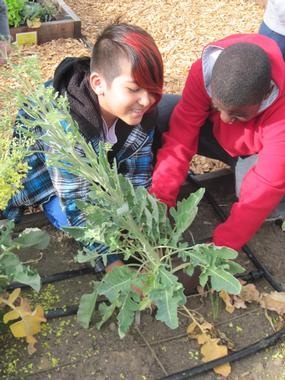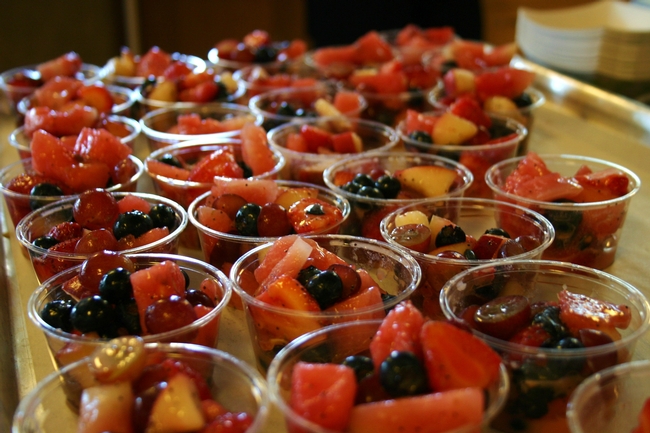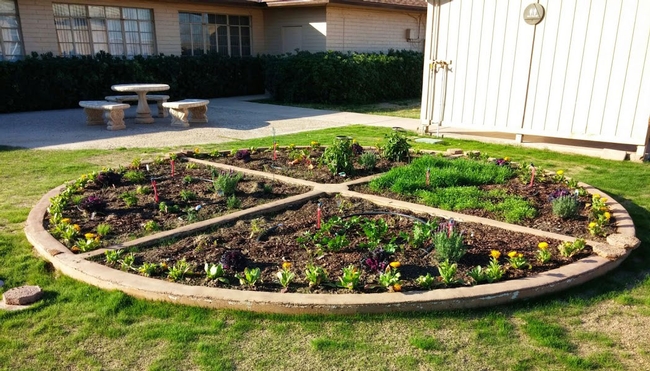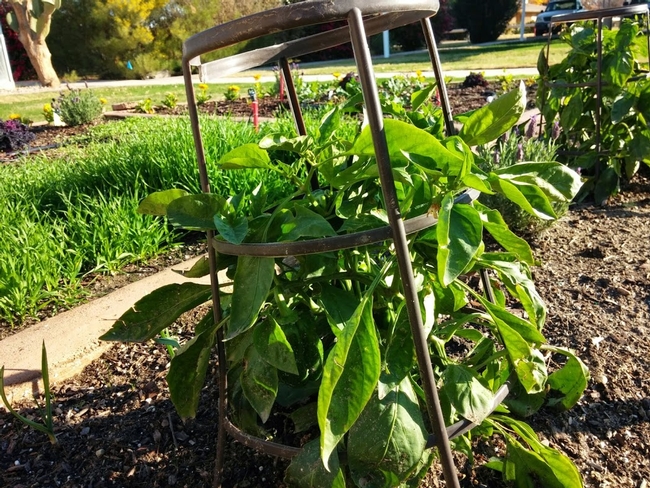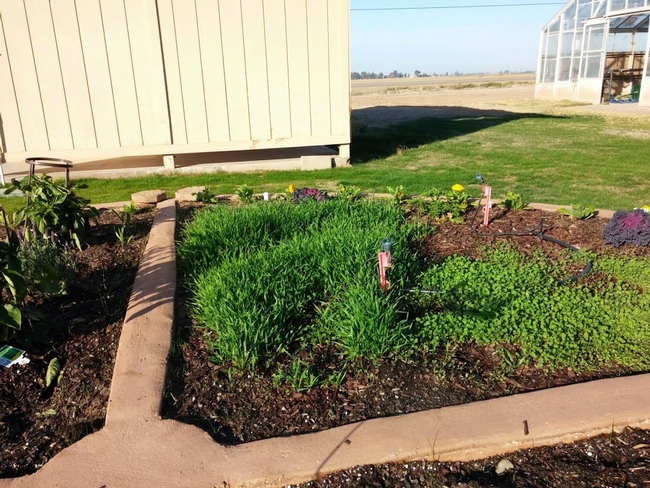UC Food and Agriculture Blogs
Shaping Healthy Choices combines approaches to make a lasting impression on kids
You can lead a child to fresh fruits and vegetables, but how do you entice them to eat healthful foods when you aren't watching?
“Simply offering healthy options is not enough to motivate children to make healthy choices,” said Sheri Zidenberg-Cherr, UC Cooperative Extension specialist in the Department of Nutrition at UC Davis.
“Moreover, imposing restrictions rather than providing children with options to make healthy choices can have long-term negative effects,” said Rachel Scherr, assistant project scientist, also in the UC Davis Department of Nutrition.
In 2012, more than one-third of children in the U.S. were overweight or obese, according to the Centers for Disease Control and Prevention. Studies have shown that obese children are more likely to be obese as adults, increasing their risk for health problems including heart disease, type 2 diabetes, stroke, cancer and osteoarthritis. To target the complex issue of eating habits, Zidenberg-Cherr and her UC Cooperative Extension and UC Davis colleagues designed a school-based program and tested it in Sacramento and Stanislaus counties through the leadership of UCCE nutrition, family and consumer science advisors Terri Spezzano and Yvonne Nicholson.
“Parents shared with me that their children are voicing input on meals and asking if they can add fruit to their salads,” a participating teacher told the researchers.
During the first year that the Shaping Healthy Choices Program was implemented in Sacramento County schools, the number of children classified as overweight or obese dropped from 56 percent to 38 percent. The participating students also improved their nutrition knowledge, ability to identify different kinds of vegetables and amounts of vegetables that they reported eating.
“I tried zucchini and yellow squash when I was little and didn't like it, but now I tried it and I love it!” said a 9-year-old student.
The Shaping Healthy Choices Program takes a multifaceted approach, combining nutrition education with family and community partnerships, regional agriculture, foods available on school campus and school wellness policies.
The garden-enhanced, inquiry-based nutrition curriculum was developed by Jessica Linnell, a doctoral candidate in the Graduate Group in Nutritional Biology; Carol Hillhouse, the School Garden Program director at the Agricultural Sustainability Institute; and Martin Smith, a UCCE specialist in the Departments of Human Ecology and Population Health and Reproduction. The family and community partnerships featuring family newsletters were developed by Carolyn Sutter, a graduate student in the Graduate Group of Human Development, and Lenna Ontai, a UCCE specialist in the Department of Human Ecology. Lori Nguyen, a doctoral candidate in the Graduate Group in Nutritional Biology, Sheridan Miyamoto, postdoctoral scholar in the Betty Irene Moore School of Nursing, and Heather Young, dean of the Betty Irene Moore School of Nursing, organized community-sponsored health fairs.
Gail Feenstra, deputy director and food systems analyst for the UC Agricultural Sustainability Institute, helped the schools set up systems to add fresh, locally grown produce to their menus. Jacqueline Bergman, a postdoctoral scholar in the Department of Nutrition, coordinated school-site specific wellness committees.
The UC Cooperative Extension and UC Davis team worked with classrooms to use Discovering Healthy Choices, a standards-based curriculum that incorporates interactive classroom nutrition, garden and physical activity education for upper elementary school students. Teachers partnered with UCCE to incorporate cooking demonstrations to show the connections between agriculture, food preparation and nutrition. To reinforce the lessons at home, Team Up for Families – monthly newsletters containing nutrition tips for the parents – were sent home with the students. School Nutrition Services purchased fruits and vegetables from regional growers and distributors to set up salad bars and prepare dishes made with fresh produce. The Shaping Healthy Choices Program activities were integrated into the school wellness initiatives.
“My students shared things they learned about safe food handling and safety in cooking,” said a teacher who participated in the study. “Parents said their children want to help in preparing meals at home.”
“My daughter is more interested in trying new foods and eating more fruits and vegetables,” reported one parent. “She often surprises the family by making a surprise salad snack for everyone.”
Preliminary analysis shows that nine months after the classroom education ended, the decrease in the students' body mass index percentiles, or BMI percentiles, was sustained. “This is a big deal,” said Zidenberg-Cherr, while cautiously encouraged by the program's success. “We are in the process of analyzing several aspects of the program — the data set is so complex and I have to feel 100 percent confident in our statements.”
Through a partnership with UC CalFresh, the researchers have expanded the comprehensive program to schools in Placer, Butte and San Luis Obispo counties. Determining feasibility for expansion of the program for broader dissemination is planned for the 2015-2016 school year.
This project was funded by grants from the UC Division of Agriculture and Natural Resources and the U.S. Department of Agriculture.
The University of California Global Food Initiative aims to put the world on a path to sustainably and nutritiously feed itself. By building on existing efforts and creating new collaborations among UC's 10 campuses, affiliated national laboratories and the Division of Agriculture and Natural Resources, the initiative will develop and export solutions for food security, health and sustainability throughout California, the United States and the world.
Asian Citrus Psyllid is Spreading in California
[From the December 2014 issue of the UC IPM Green Bulletin] In August 2012, we wrote about the Asian citrus psyllid (ACP) in UC IPM's Green Bulletin newsletter. At that time, ACP was found only in San Diego, Imperial, Riverside, San Bernardino, Los...
Victorian Box Decline
[From the December 2014 issue of the UC IPM Green Bulletin] Victorian box (Pittosporum undulatum) is an evergreen tree native to Australia that grows moderately fast to about 50 feet high and wide. It was much planted as an ornamental landscape subject...
Southern Californians get another reason to love pizza
People love pizza, so they are sure to enjoy the new garden growing at the UC Desert Research and Extension Center in Holtville. A circle planted with wheat, tomatoes, bell peppers, herbs and spices, the garden looks like and produces the ingredients for pizza.
“Pizza can be a healthy meal, if you build it right,” said Stephanie Collins, outreach assistant at the Desert REC. “We can teach kids to add vegetables and educate them about whole grains and non-fat cheese.”
Collins initially envisioned the pizza garden teaching tool when she joined UC Cooperative Extension four years ago as a nutrition educator. The recent removal of a large tree stump made the location available.
The pizza garden will be part of the center's UC FARM SMART program, in which about 5,000 school children and “snowbird” winter residents annually visit the station to learn about UC's ongoing agricultural research in the desert area, tour the 255-acre facility on a hay wagon and taste products that are grown in the vicinity.
When they visit the pizza garden, they'll learn many of their favorite foods come from plants grown nearby in the productive agricultural region. The garden is divided into four wedges. The wheat, which is used to make the pizza crust, and alfalfa, which is an important feed for dairy cows, the source of cheese, is grown in one wedge.
“Alfalfa is cheese in the making,” Collins said.
Tomatoes, onions and arugula are planted in the next wedge. The tomatoes are used for traditional sauce and onions are a healthy and flavorful topping, but arugula?
“Arugula is great on pizza,” Collins said. “It has a strong, peppery flavor.”
In another section, visitors can smell, feel and taste the herbs that season pizza sauce. Oregano, basil, sage, thyme, chives, parsley and rosemary fill the third wedge.
The fourth section holds bell peppers and rhubarb.
“The rhubarb is just for fun,” Collins said.
The garden is encircled with marigolds for the appearance of crust, and the wedges are dotted with a variety of non-pizza plants, like ornamental kale, vinca and lavender. These plants also serve an educational purpose, said Sam Urie, the UC FARM SMART manager at the Desert REC.
“A diversity of plants attracts beneficial insects, so they help the garden out,” Urie said.
The mostly senior citizen visitors pay $20 per person for the station tour, which includes a homemade lunch featuring locally produced foods. This year, the centerpiece of the meal will be carrot-ginger soup.
The visitors' fees help offset the cost of the tours for local children, who pay just $3 each.
For more information or to schedule a tour, contact Urie at (760) 791-0261, surie@ucanr.edu.
An initiative to enhance competitive and sustainable food systems is part of the UC Division of Agriculture and Natural Resources Strategic Vision 2025.
Farmer Interview: Jeremy Mineau of Super Tuber Farm
What is something you are enjoying eating from your farm right now? We are just starting to harvest some carrots that have been the ground for a while and I'm really enjoying their sweet flavor. We direct seeded them in the end of August and they are...

Super Tuber!



